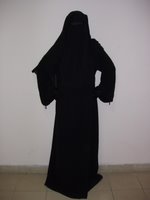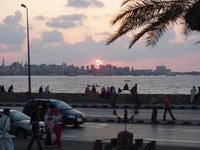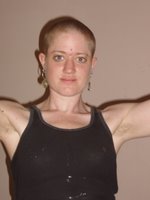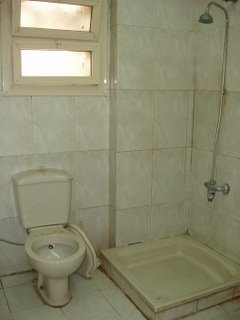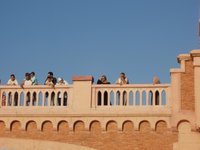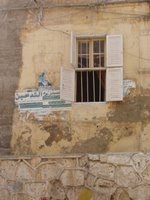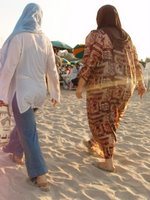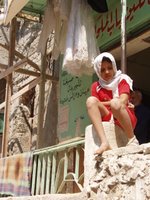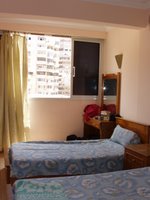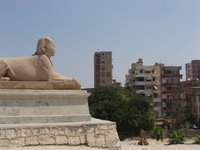Ninga Triangle
So the deal is: most women cover from ankle to wrist to face. There are many women who do not wear head scarves they tend mostly to be in the under 25 age-bracket. Some women show elbows and necklines but generally not shoulders and I have never seen a strappy top or mid-drift on a local woman. Some women wear a hijab the piece of fabric across the face or the full burka where only the eyes show (glasses are worn over the top which gives a kind of puppetly look), sometimes eyes are hidden behind mesh or layers of fabric. Men also are pretty covered wearing trousers, but they are a lot more lax in their displays of elbows and necks. A few older children wear the headscarves, and most small children (under 10) wear what a westerner would in the same weather (strappy tops, shorts, short skirts etc).
The shop windows, however, are filled with displays of summer dresses, tiny tops, bikinis and other public-wear that would never be seen in Egyptian public. I wonder if there is a lot of pride in what people wear at home around their family. Posters, billboards, advertisements almost never show headscarves and music videos are comparatively provocative. So really this is just like western culture but on different levels and to different extremes. Generally we don't dress like mannequins in shop windows or like models on billboards, and we most likely wouldn't wear on the street what we see in music videos.


The bit that I find odd is that children have a lot of freedom, in the way they dress and how they behave in public. Children are out everywhere and at all times. They are with their parents at the cinema at 1am, hanging out in the mall at 2am, in the shisha (flavored smoke) bar at 3am. Was in a restaurant with a live singer several wee girls (about 5, 6, 8 years old) were up dancing. This was so normal until I looked around the restaurant giving the activity a totally different context. The children's adult family was covered in fabric, sitting still and reserved. By comparison the kids were strangely provocative and free.
So I decided to try it. I bought a full burka including gloves and walked a block in it. It is made up of separate components. When I bought the hijab the sales girl showed me how to put it on (it is tied around the forhead and four layers of fabric hang across the face, layers are peeled back over the head giving greater visabity from both sides each time). She asked me why I wanted it. I felt saying 'It'll be great for costume parties.' Would be inappropriate, so I said 'protection'. This entered into a discussion of religion. No religion is not comprehended easily, questioned, then judged as either a shame or shameful I couldn't tell. She also was helpful enough to let me know that in some western countries the women are not virgins and this is because they do not protect themselves from men the way they should and this is wrong.
So last night I dressed from head to toe in my new black burka and walked a block. The first 100 meters I felt obvious, the weight and blinkered vision reminded me of wearing a bunny costume. I felt like everyone was looking at me. Then I felt a bit guilty, what if someone noticed that I hadn't tied my scarf right, or my gestures, mannerisms or posture betray me, or someone bumped into me, the moment I open my mouth it would be obvious I am a tourist. Then I got used to it. I was invisible; I walked right up close through groups of men who did not glance away from their conversations. I felt like I was wearing an invisibility cloak. I could have been anyone so was treated like no-one.
Of course that it also displays the gender imbalance. Women feel safer and more comfortable when covered. The responsibility for safety is on the potential victim. It is viewed that men are not in control of their actions if provoked by a woman.
The problem I personally had with the dress is that it is cruel in this heat.
